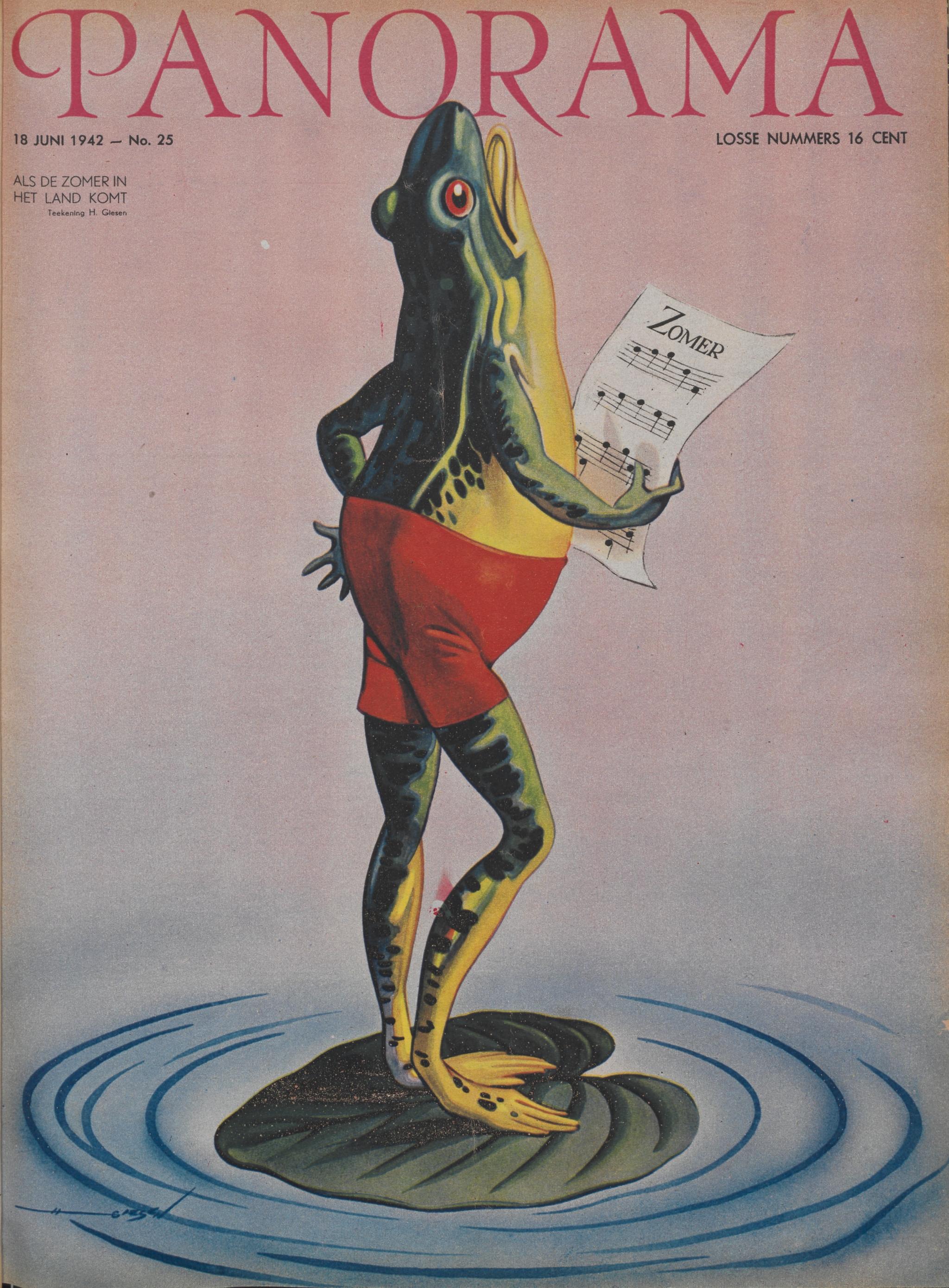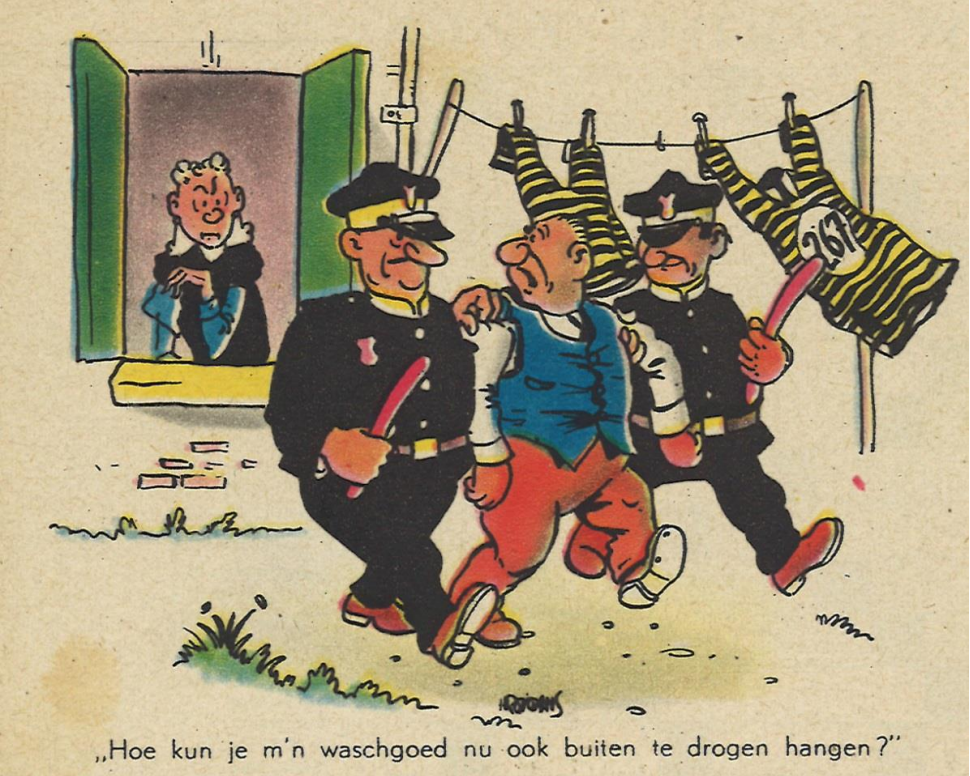Panorama
Panorama was an illustrated weekly magazine read in the Secret Annex.

Voorpagina van Panorama, 18 juni 1942
Collectie: Anne Frank Stichting Copyright: Publiek domein.
Panorama magazine first rolled off the copper intaglio presses of Sijthoff publishers in Leiden in 1913.[1] When Panorama first appeared, it was mainly the photo illustrations that attracted readers. The photo reports about the battle at the front during the First World War even made it possible for the magazine to be published twice a week, temporarily.
Initially, Panorama was a Roman Catholic magazine read by the whole family. The magazine, which was known for its high-quality printing, was taken over in 1929 by Uitgeverij en Drukkerij De Spaarnestad (De Spaarnestad Publishing and Printing Company) in Haarlem, the publisher of Katholieke Illustratie (Catholic Illustration) and - from 1934 - also Libelle.[2]Under auspices of De Spaarnstad Panorama became the neutral equivalent of Katholieke Illustratiie and also targeted families with a wide variety of topics, including current events, art, fashion, sports and photo stories from home and abroad.
During the German occupation, Panorama appeared every two weeks instead of weekly. The 1942 issues included fashion and cooking tips, a serial by J.G. Toonder entitled De Zandhoeve (The Sand Farmstead), (photo) reports on German military successes at the front. The back page of each issue featured the entertainment section 'Ter leringe ende vermaek' ('For your enjoyment and instruction') with crossword puzzles, cartoons, jokes and the comic strip 'Sjors. Voorzitter van de Rebellenclub'.[3] Anne writes in her diary on 26 October 1942 : "Mr. Kugler again brought 12 Panoramas, now we have something to read again."[4] From the Panorama of 18 June 1942, she cut a cartoon by Henk Rotgans and pasted it on one of the walls of her room.[5] Only some remnants of that cartoon remain.[6] The original picture can be seen below.
After te war, Panorama developed over the years from a family weekly into a men's magazine, with much attention to crime, sex and sports.[7]
Footnotes
- ^ Zie: Joan Hemels & Renée Vegt, Het geïllustreerde tijdschrift in Nederland: bron van kennis en vermaak, lust voor het oog. Bibliografie. Deel I: 1940-1945, Amsterdam: Otto Cramwinckel, 1993, p. 347-351; Elsbeth Kwant, Marieke van Delft, Reinder Storm (samenst. & red.), Het Tijdschriftenboek, Zwolle: Waanders, 2006, p. 160; Marieke van Delft, Nel van Dijk, Reinder Storm (red.), Magazine! 150 jaar Nederlandse publiekstijdschriften, Zwolle: Waanders, 2006, p. 58-59; KB - Topstukken: Tijdschrift Panorama.
- ^ Voor de geschiedenis van het geïllustreerde tijdschrift in Nederland en de rol van uitgeverij De Spaarnestad, zie: Tom van der Linden, Spaarnestad-fotografen: broodfotografen of unieke beeldkunstenaars? Een onderzoek naar de fotografie van uitgeverij De Spaarnestad tussen 1910 en 2000 (Master thesis Media & Journalistiek, Erasmus Universiteit Rotterdam, 2013).
- ^ Sjors was een stripreeks over een een kwajongen die spannende avonturen meemaakt. Wikipedia: Sjors & Sjimmie.
- ^ Anne Frank, Diary Version A, 26 October 1942, in: The Collected Works, transl. from the Dtuch by Susan Massotty, London [etc.]: Bloomsbury Continuum, 2019.
- ^ Panorama, 18 juni 1942, p. 16. Diverse jaargangen van Panorama zijn integraal te raadplegen op Delpher, de website van de Koninklijke Bibliotheek, met gedigitaliseerde historische Nederlandse kranten, boeken, tijdschriften en radiobulletins uit bibliotheken, musea en andere erfgoedinstellingen.
- ^ Anne Frank Stichting - Collectie online: Resten van een cartoon.
- ^ Wikipedia: Panorama (Nederlands tijdschrift).
Digital files (1)

Caroon van Henk Rotgans in Panorama, 18 juni 1942
Copyright: Publiek domein.
Photographer: Collectie kan worden ingezet voor publiek.